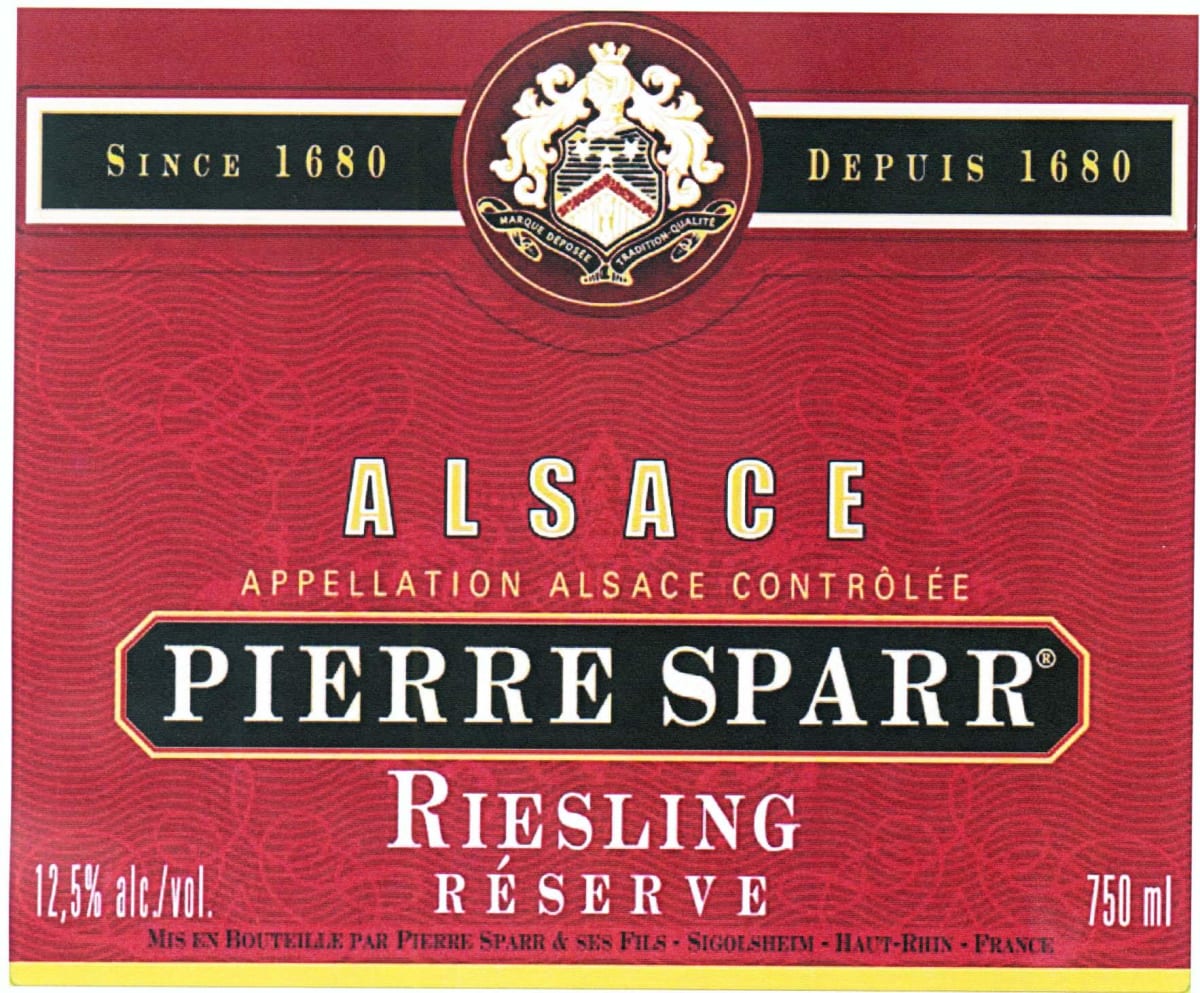Pierre Sparr Reserve Riesling 2007


Product Details
Your Rating
Somm Note
Winemaker Notes

The Alsace region of France is known throughout the world for its lovely, dry white wines. Vineyards were first planted in this narrow valley during the height of the Roman Empire. Maison Pierre Sparr was established by the Sparr family in 1680 in the desirable Haut Rhin. Today quality remains Pierre Sparr’s primary focus and the winery consistently exceeds AOC guidelines (Alsace produces only AOC level wines). Minimal intervention in the winery preserves the characteristics of the land; gentle whole cluster pressing followed by slow, cool fermentation. Sparkling wines are all traditional method (as in Champagne). The grapes are farmed sustainably. Pierre Sparr wines are a pure expression of Alsace with its varied geology and topography; authentically Alsatian wines - aromatic, fruity, elegant, clean and vibrant. Pierre Sparr wines are food-friendly and accessible for everyday consumption.
Pierre Sparr Winemaker Hélène Georges' father introduced wine tasting to her at a young age. She recalls tasting an Alsatian Muscat and immediately knowing that she wanted to give people the same emotions she experienced when tasting that memorable wine. "I believe women winemakers influence the style of wine as we are very sensitive in tasting. I’d like to believe women have brought more elegance to wines in recent years." With almost ten years of winemaking experience, Hélène has recognized more women taking their place in the cellar. "More and more women are making their mark in this environment, and we need to become role models for the future generations by giving them easier access to responsible jobs," she says. "But first, we must remind each other that higher sensitivity is the most important thing in the art of tasting!"

Riesling possesses a remarkable ability to reflect the character of wherever it is grown while still maintaining its identity. A regal variety of incredible purity and precision, this versatile grape can be just as enjoyable dry or sweet, young or old, still or sparkling and can age longer than nearly any other white variety. Somm Secret—Given how difficult it is to discern the level of sweetness in a Riesling from the label, here are some clues to find the dry ones. First, look for the world “trocken.” (“Halbtrocken” or “feinherb” mean off-dry.) Also a higher abv usually indicates a drier Riesling.

Small but mighty, this picturesque region in northeastern France is renowned for its white wines produced by passionate families whose winemaking roots span generations and even centuries. Nestled between the Vosges Mountains and the Rhine River, Alsace benefits from a sunny, dry climate and a long growing season. It is one of the most geologically diverse regions in the world — one of the many reasons why Alsace rocks!
Alsace wines include dry, mineral-driven Riesling, earthy Pinot Gris, refreshing Pinot Blanc, exuberant Gewurztraminer, elegant Pinot Noir, and more. From traditional-method sparkling wines to easy-drinking AOC Alsace, to complex Grand Cru bottlings from 51 distinct sites, and rich, late harvest wines, Alsace produces a wine for every occasion. Most Alsace wines are single-varietal bottlings and are labeled with the grape name. The region is also one of the greenest wine-producing areas in France, with 36% of its vineyard area certified organic.
Riesling, the region’s calling card, is dry, fresh and floral in its youth, developing complex mineral and flint character with age. Gewurztraminer is known for its signature spice and lychee aromatics. Pinot Gris is prized for its combination of crisp acidity and savory spice as well as ripe stone fruit flavors. Pinot Blanc is an affable food partner or porch sipper. Pinot Noir, the only red grape in AOC Alsace, is now authorized in three Grand Cru areas and is also used for Crémant d’Alsace sparkling rosé. Any bottle you choose will offer deliciousness, pleasure and value that is unprecedented in other wine regions.